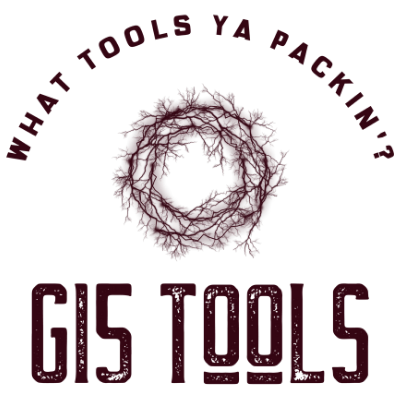Marketing teams at most companies still waste weeks trying to figure out what competitors are up to. Sales reps show up to meetings hoping they’ve done enough homework. Content strategies change about as often as office furniture gets replaced.
But some businesses are quietly throwing out this whole playbook. They’re using AI agents—not the chatbot kind, but actual digital workers that handle the grunt work so humans can think bigger.
When Automation Gets a Brain
Remember those old automated systems that would keep doing the same stupid thing even when it obviously wasn’t working anymore? AI agents work differently entirely. Think of them as having a research assistant who processes information constantly and connects patterns across months of data without forgetting details.
Competitive analysis provides a clear example: most teams still spend weeks juggling spreadsheets, keyword research tools and endless status meetings to figure out what competitors are doing. Someone would pull data, someone else would try to make sense of it and eventually a strategy might emerge—usually right when market conditions had already changed.
Modern AI agents compress that entire nightmare into maybe an hour. They don’t just spot trends; they understand why those trends matter and what to do about them. When search volumes spike for industry terms, these systems connect it to seasonal patterns, competitor moves and content gaps to suggest actual next steps.
IBM’s research shows businesses expect their AI-powered workflows to increase eightfold by 2026. That’s not gradual adoption—that’s entire industries getting flipped upside down.
Turning Data Chaos Into Something Useful
Most businesses are drowning in information. Analytics dashboards, performance reports, market research—it’s all sitting there, but nobody knows what any of it means or what to do about it.
SEO strategy is a perfect example of this mess. Success requires juggling keyword opportunities, content gaps, user behavior and competitor analysis all at once. Most teams just pick one piece and hope for the best. AI systems can actually handle all of it simultaneously and figure out where the biggest opportunities are hiding.
Sales preparation is another disaster area. Good reps used to spend hours researching each prospect—checking their website, digging into performance metrics, maybe looking at recent news. Now specialized agents compile comprehensive briefings with traffic data, technology adoption signals and conversation starters tailored to specific prospects.
What makes this work is scale. When AI agents can process information from millions of companies and billions of search queries, their suggestions reflect actual market reality instead of tiny sample sizes that might be completely wrong.
Outreach That Actually Works
Generic email templates are basically spam at this point. Everyone can spot mass-produced messages immediately, and they’re about as effective as cold calls during dinner.
The problem isn’t personalization—it’s doing personalization at scale without hiring fifty researchers. AI agents solve this by analyzing behavioral signals like website activity patterns, app usage changes and technology adoption to figure out optimal timing and messaging for each target.
This doesn’t replace human creativity. It just provides the foundation so teams can focus on building relationships instead of data mining. Deloitte expects roughly half of companies to pilot AI agent programs by 2027, with sales and marketing leading the charge because they’re desperate for anything that actually works.
Content strategy benefits from similar capabilities. Rather than making educated guesses about audience preferences, agents examine search patterns, engagement metrics and competitive landscapes to pinpoint worthwhile topics. One marketing specialist explained: “The platform reveals our focus areas and gaps without requiring multiple tool switches.
Privacy considerations become critical here. Personalization can quickly become invasive without appropriate safeguards. Robust data governance separates effective outreach from intrusive communication that damages relationships.
Coordinated Digital Workflows
Single AI agents provide value, but coordinated teams of specialized agents working in concert? That creates multiplicative benefits.
Supply chain management shows how this works. One agent watches demand forecasting, another tracks supplier reliability, a third manages inventory adjustments. Orchestration systems coordinate their activities so decisions actually make sense together. Microsoft’s Copilot Studio illustrates how multi-agent workflows operate cohesively across different business functions.
The results speak for themselves. PwC research indicates that coordinated agent systems reduce development cycles by 60% while cutting production errors in half. These improvements create substantial competitive advantages that reshape market dynamics.
Implementation is still messy though. Most organizations lack the technical infrastructure for seamless agent coordination. Smart approach: start with something manageable like customer support automation, then expand to marketing analytics, then tackle the really complex stuff.
One manager put it well: “We can ask specific questions about market trends and get answers immediately. Our competitors are still waiting for weekly reports that are outdated before they’re finished.”
Where Things Go Wrong
AI agent adoption isn’t all sunshine and efficiency gains. Data quality problems can wreck even the most sophisticated systems. Garbage in, garbage out applies double to AI agents because they can amplify bad information really quickly.
System integration is another headache. Legacy platforms hate the modular architectures that AI ecosystems need. McKinsey found that only 1% of companies have actually figured out mature AI deployment, with almost half citing skill gaps as their main problem.
Security and ethics require serious attention too. When agents process sensitive information—customer records, financial data, strategic intelligence—security measures must be comprehensive. Regular audits, diverse training datasets and human oversight have become essential requirements rather than optional considerations.
The talent shortage continues expanding. Organizations need staff with AI fluency, data engineering capabilities and collaborative skills for human-AI partnerships. The World Economic Forum recommends a systematic approach: establish clear objectives, implement human review points and iterate based on results. The framework appears straightforward, yet execution challenges trip up many implementations.
Future Implications
AI agents represent fundamental shifts in business capabilities rather than simple technology upgrades. Organizations mastering agent coordination, personalization and strategic implementation will establish new performance benchmarks that leave others struggling to catch up.
Effective adoption demands thoughtful planning: begin with targeted applications, establish robust data infrastructure and develop human-AI collaboration competencies. Institutions that get this right won’t just keep up with market changes—they’ll spot and capitalize on opportunities before competitors even realize something’s happening.
The transformation is already underway. Some businesses are quietly pulling ahead while others are still debating whether AI is worth the investment. Guess which group is going to win?





